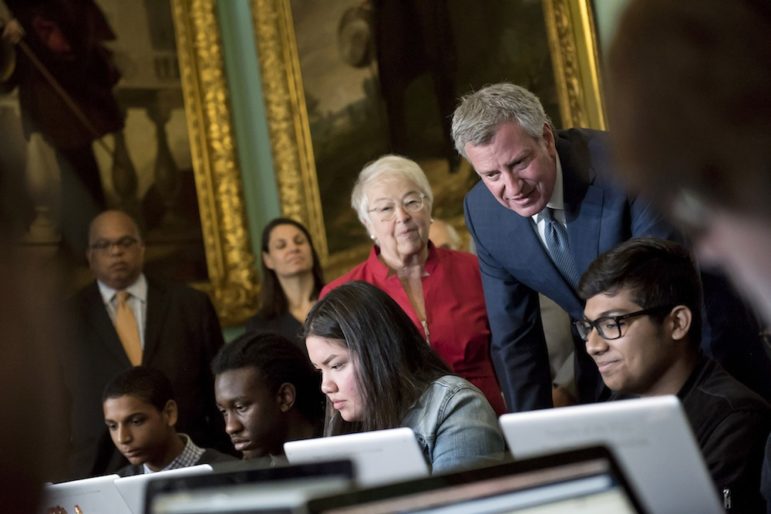
Ed Reed/Mayoral Photography Office.
Mayor de Blasio now characterizes Chancellor Carmen Farina's diversity plan as a mere 'first step,' but that raises the question of how long the city must wait to learn about the next one.
Last week the mayor’s office and the Department of Education released their much anticipated plan for achieving “Diversity in New York City Public Schools.” Their strategy is thin and amateurish, lacking in urgency and imagination.
Though not present for the initial announcement, Mayor de Blasio has made matters worse in recent days by walking back the plan’s promised scope to a mere “first step” and displacing the problem of the city’s public school segregation to “racism and other bias in our society,” a hand-wringing rationalization for 3 ½ years of inaction.
What’s wrong with the plan? First, it fails to address the real issue: practices by the Department of Education that promote school segregation. Examples include the proliferation of academically stratified schools, programs, and classes; attendance zones concentrating rather than diffusing students by wealth, race, ethnicity, and residential status; and perpetuating myths of school quality that create a self-fulfilling prophesy of success and failure.
These sins of omission are matched by sins of commission, namely a sketchily outlined Advisory Commission which will delay much of the plan for a full year while studying what turns out to be a proposal rather than a final blueprint. No budget, no staff, no membership has been announced for this body central to the mayor’s vision.
The plan is not all bad, setting out a series of initiatives derided by the New York Times as “mostly small bore” and by the Daily News as an “insufficient strategy” to relieve some segregative aspects of current policy. Examples include ending bonuses toward admission for students attending school information sessions and, for a small number of students, creating limited targets for decreasing racial isolation and economic stratification.
A stronger systemic plan is needed.
Most importantly, cut back on academic screening that largely tracks economic privilege. This wouldn’t involve changing current students’ enrollment or even immediately changing admissions criteria but starting a brief transition to more heterogeneous enrollment. This must include the five Specialized High Schools that de Blasio controls, exempting Stuyvesant, Bronx Science, Brooklyn Tech High Schools, which are State-mandated to require admission by rank-ordered test scores.
Next, the city needs to do a comprehensive analysis of school attendance zones tied to racial, ethnic, income, and other relevant data such as siting of homeless shelters. The Census reports this information down to nine digit zip codes and software is readily available to determine how zones can be changed to diversify student enrollments. This information will only be of rough use since demography changes and there are too many ethnicities and other variable to reduce enrollment to a formula or – God help us – quotas. But the exercise will serve as a concrete working proposal for communities to comment, resulting in needed adjustments. This task is not easy but provides the hard-headed technical expertise and community outreach absent from the mayor’s approach. Legal help is also needed to avoid or litigate issues raised by city policies involving racial identification and other hot-button criteria.
Another important action is an extensive educational campaign to remind everyone that desegregation and diversity help everyone, academically and socially. Test scores and school reputations are much more complex than single letter grades or simplistic descriptions like “excellent,” “good,” “bad,” and “failing”. More high scoring kids will increase the average test score of currently low-scoring school and, more importantly, research demonstrates that high-scoring kids’ ability will not be harmed by attending a school with a lower average than some other school. Individuals are not the “average” which expresses a wide range of abilities. Moreover, unquantified characteristics can be much more important than numerical data. This is true of students and it is true of teaching staffs as well. No school is all one kind or another. Time is another factor that make school quality vary much more than is often realized.
Other time-tested strategies abound, from magnet schools to controlled choice programs that de Blasio has already supported for expansion. New York’s vast transportation resources should also be used to promote diversity. Yes, including bussing, too long code for maintaining segregation but already a fact of life for tens of thousands of city students.
This isn’t a comprehensive list of actions needed yesterday to improve equality and excellence throughout our school system. But they constitute the bold leadership necessary to meet the challenge. Whenever the mayor decides to take the promised second step in this journey, let it be a giant step, worthy of the greatest city in the world.
David C. Bloomfield is Professor of Educational Leadership, Law, and Policy at Brooklyn College and The CUNY Graduate Center.


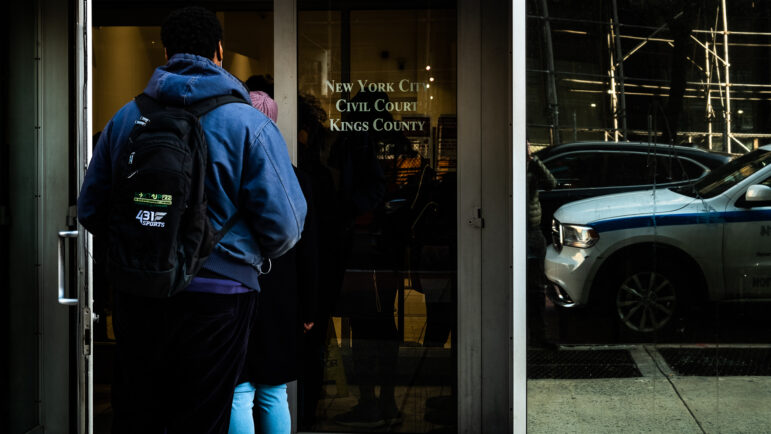
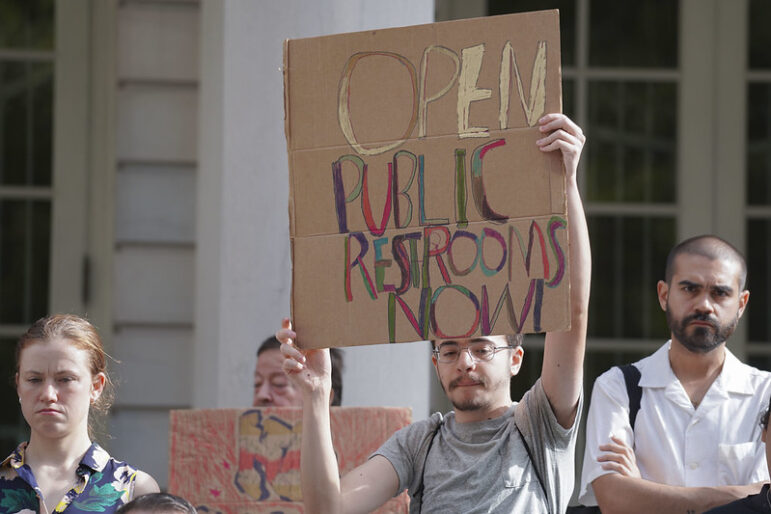
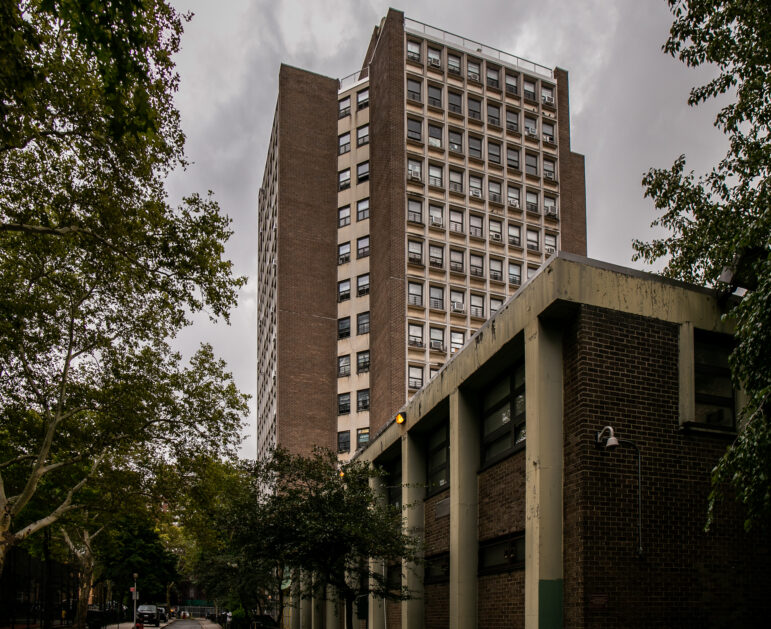
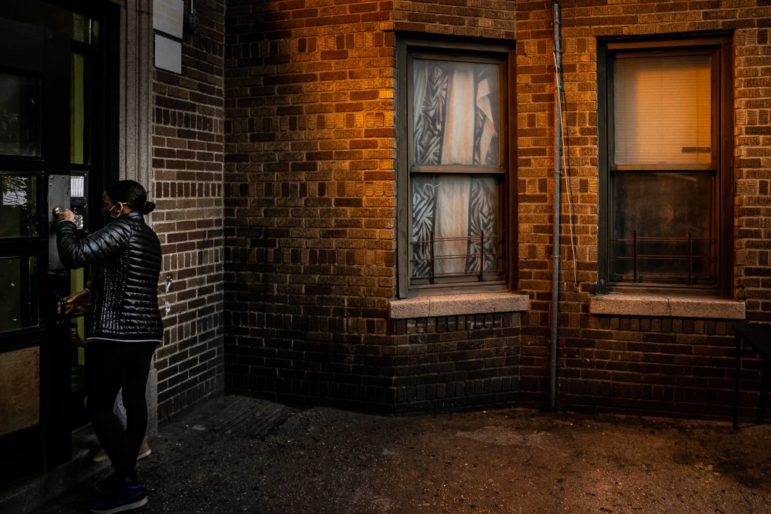
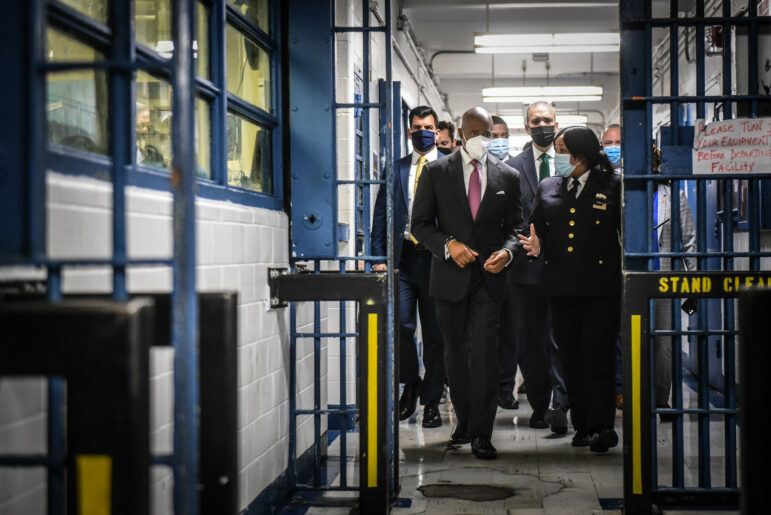


One thought on “CityViews: What’s Wrong With the Mayor’s School Diversity Plan”
Only roughly 15% (169,803 of 1,141,232) of the students in the public schools are white. Basically not enough white kids to spread around.
http://schools.nyc.gov/NR/rdonlyres/77954FB0-FD24-476B-AB81-3E9BBE8655D9/213559/DemographicSnapshot201213to201617Public_FINAL1.xlsx